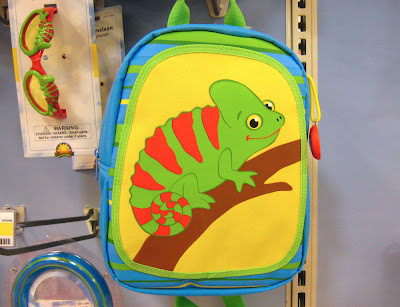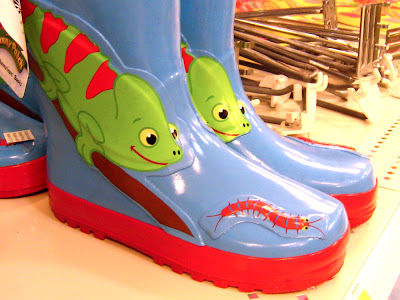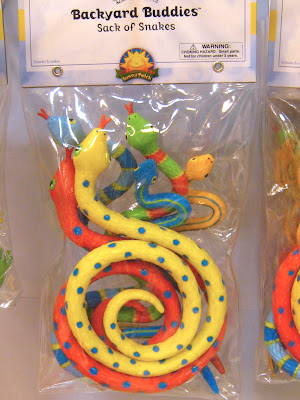Say this in your best Christopher Walken voice: "Guess what? I gotta fever... and the only prescription is more countdown!"
45. 1994 Pinnacle
There are two ways a set or a year could be deemed a Hobby Turning Point. The first is in content, ie rookies, subsets, corrected/uncorrected errors, major stars included, and perhaps the last cards of retiring stars. The second is in the medium and the technology in its presentation. For example, 1981 was a hobby turning point in medium: the hobby went from one manufacturer to three. 1987 provided a hobby turning point in content: it was one of the strongest rookie classes of that particular decade, squarely focusing future hobby attention on the seemingly endless waves of strong young stars.
 I bring this up because I’ve been trying to figure out just where 1994 fits in. The year saw Upper Deck’s and Score’s first parallel sets and the first Bowman’s Best set, all of which clearly expanded the hobby landscape in a technical sense (I’m not counting UD’s gold hologram set from 1993, as that was released in factory-set form only). But it also saw the introduction of one of the decade’s defining rookies in Alex Rodriguez, a player who has become so important that all rankings, lists and analysis of sets from his rookie year must be made with his inclusion in mind.
I bring this up because I’ve been trying to figure out just where 1994 fits in. The year saw Upper Deck’s and Score’s first parallel sets and the first Bowman’s Best set, all of which clearly expanded the hobby landscape in a technical sense (I’m not counting UD’s gold hologram set from 1993, as that was released in factory-set form only). But it also saw the introduction of one of the decade’s defining rookies in Alex Rodriguez, a player who has become so important that all rankings, lists and analysis of sets from his rookie year must be made with his inclusion in mind.
This point sort of contradicts one of the pillars of my thoughts on how to rank a set. One great card does not a great set make; the set should be judged on its entire checklist. A great example of this is between 1986 Topps and 1986 Fleer. That year’s Topps set was iconic, even though it didn’t include a card of Jose Canseco. Fleer, on the other hand, could be best described as Canseco and a pile of commons. In other words, a given set shouldn’t be punished if it doesn’t have the big rookie from a given year.
I’m thinking I might need to amend this rule, simply because in 1986 it didn’t matter quite so much that Topps didn’t have Canseco, because there were so few sets (and Topps had subsets and other cards that Fleer, Donruss, and Sportflics didn’t). But because by 1994 there was so much parity in a hobby landscape of literally scores of sets, it certainly did matter if a given set didn’t include Rodriguez. Accordingly, in a countdown like this, sets without Rodriguez should be given a demerit.
That’s why it pains me that 1994 Pinnacle doesn’t rate higher. This was one of my favorite sets that I couldn’t really afford to collect: Clean, crisp photography on a full-bleed glossy stock, minimal front-of-card graphics and understated black backs. Just a great looking card, not to mention what has quite possibly become my favorite parallel set of all time (narrowly beating out the run of Silver Signatures sets from mid-Nineties Collector’s Choice): The Museum Collection. By championing the use of Dufex, Pinnacle created a gorgeous, shimmering card, and an excellent, poor-man’s stand-in for Topps’ refractors.
Unfortunately, that’s where the niceties end. The checklist seems stale in hindsight (especially without a Rodriguez rookie), with no real deviations for subsets within the base set, complemented by a smattering of boring inserts. All of it seems a little fishy, too, because 1993 Pinnacle had great subsets and massive, fun-to-covet insert sets (like Team 2001 and Then & Now), which seemingly disappeared from one year to the next. It’s too bad, because 1994 Pinnacle had its shit together in a big way in terms of its design. And that’s no small feat.
44. 1994 Bowman
No, this set didn’t have an Alex Rodriguez rookie, either. In fact, only eight sets had him on one of their checklists in 1994. Still, by 1994 Bowman had firmly established itself as a major player, if not the player in the rookie game. It didn’t really need Rodriguez to prove its position, even though many 1994 rookies weren’t surrounded by as much hype, nor made an immediate impact.
It took guys like Derrek Lee, Trot Nixon, Torii Hunter, and Billy Wagner a few years to get things going. And, like earlier Bowman sets, many rookies never got it going. Guys like Cleveland Lavell, Arquimedez Pozo, Gar Finnvold, Duff Brumley and the immortal Ruben ‘Derek Jeter Wanted Me To Steal These” Rivera. But the thing that brought attention to Bowman—even to a weak set like 1994—was that there were so many rookies. First came the flameouts, then guys like LoDuca, Renteria, Edgardo Alfonzo, and Wagner. Then a third wave of Lee, Hunter, Posada, Nixon, and others. By no stretch of the imagination can we compare this set to 1992 (or even to a lesser extent 1993) Bowman, but three waves of rookie interest does give your set some staying power.
Rookies aside, the rest of the checklist never struck me as exciting, fun, or even interesting. At just under 700 cards, I have always approached this issue as ‘just another set with all the same guys.’
The mantra of producing a set in the Nineties was that to compete you had to give collectors what they wanted: presumably a thousand versions of their favorite players, be it from the base set, as part of a subset, and/or in a mixture of inserts. But because every manufacturer was following this rule, you also had to be sure that your product stood out from the rest. So what did Bowman do? They slapped some shiny foil on the some of the cards. They gave every card hideous strips of metallic gold. But most of all they made it about the base set, meaning no inserts. Collectors might have come for the rookies, but why should they have stayed for the rest? I’m still trying to figure that one out.
43. 1994 Leaf/Limited & Leaf/Limited Rookies
I think I can explain the logic behind these sets. Obviously they are ‘These Go to Eleven’ sets from the Donruss and Leaf executives. Let’s start in 1990. Leaf comes out, trumping Upper Deck’s mind-blowing inaugural 1989 triumph. Then in 1991 Fleer chisels out the Ultra line, and Topps debuts Stadium Club, teaming with Kodak to melt some faces with full-bleed photography and full-color backs. (Donruss replies with unintentional comedic gem that is Studio.) 1992 sees the introduction of Pinnacle from Score, a beautiful card with crisp photography, black gradient borders and a thin gloss. 1993 raises the stakes even higher, with Topps’ Finest throwdown, Upper Deck’s stylish SP, and Fleer’s cigarette-cased Flair. Oh sure, Donruss still had the Leaf line chugging away since the 1990 bow, and a few of the sets were relatively decent (1992, 1993), but the manufacturer didn’t have an answer to Finest, Flair, or SP. Then in 1994 they released Leaf/Limited and L/L Rookies, super-premiums that accelerated the arms race for the deep-pocketed, new-card collector.
And truthfully, even though I considered the appearance of sets like these as a sign of the hobby apocalypse, they aren’t bad looking. The base card looks like a cross between a playing card and the cardboard back to a new razor, with squares and dark lines harking back to those heady old-school Donruss days of 1985 and 1986 (albeit L/L is a little classier).
The base checklists are tight: L/L is at 160 cards; L/L/R at 80. And yet no one stands out. That’s because the star of this show is not in one of the base sets. It’s in the L/L/R insert set ‘Rookie Phenoms.’ I’m speaking, of course, about the Alex Rodriguez rookie, gold-foiled up the wazoo and serial-numbered to 5,000. Talk about summing up the future of the hobby in one card.
But let’s get back to the actual base sets for a moment. Were they even collectable? I’m not sure. Besides being wowed by the super-premium-ness of it all, what were collectors after? Without the inclusion of the Rodriguez rookie, these would rank lower than late-run Triple Play.
It’s 1986 Fleer Syndrome all over again. Too bad Leaf threw their Canseco stand-in in as a hard-to-find insert, leaving almost everyone with the pile of commons.
 REMINDER: The Sixth Douglas Adams Memorial Lecture will take place at the Royal Geographic Society in London, on Wednesday 12th March 2008.
REMINDER: The Sixth Douglas Adams Memorial Lecture will take place at the Royal Geographic Society in London, on Wednesday 12th March 2008. radio scripts which will hopefully reunite many original cast members such as...

















 I bring this up because I’ve been trying to figure out just where 1994 fits in. The year saw Upper Deck’s and Score’s first parallel sets and the first Bowman’s Best set, all of which clearly expanded the hobby landscape in a technical sense (I’m not counting UD’s gold hologram set from 1993, as that was released in factory-set form only). But it also saw the introduction of one of the decade’s defining rookies in Alex Rodriguez, a player who has become so important that all rankings, lists and analysis of sets from his rookie year must be made with his inclusion in mind.
I bring this up because I’ve been trying to figure out just where 1994 fits in. The year saw Upper Deck’s and Score’s first parallel sets and the first Bowman’s Best set, all of which clearly expanded the hobby landscape in a technical sense (I’m not counting UD’s gold hologram set from 1993, as that was released in factory-set form only). But it also saw the introduction of one of the decade’s defining rookies in Alex Rodriguez, a player who has become so important that all rankings, lists and analysis of sets from his rookie year must be made with his inclusion in mind.


 Goudey Trade-away #46: Tekulve and Bottalico for Mulder and Vidro
Goudey Trade-away #46: Tekulve and Bottalico for Mulder and Vidro


























